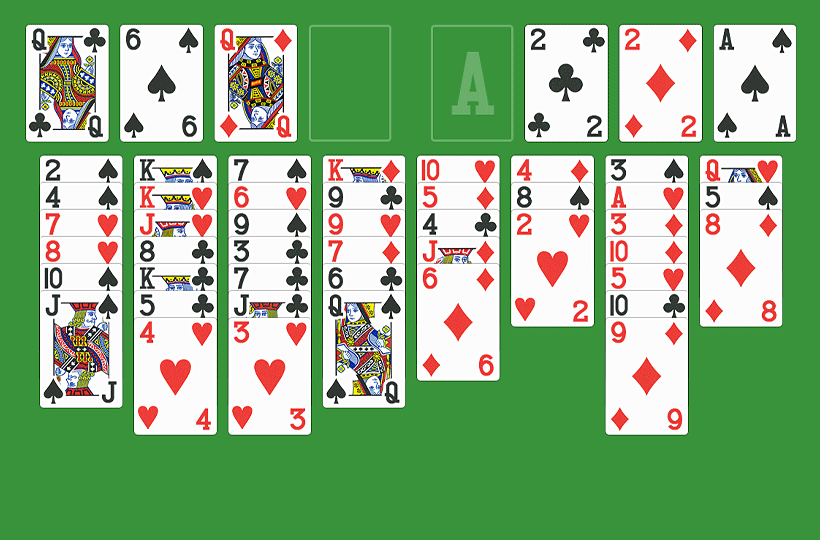
FreeCell Solitaire is a captivating card game that puts a unique twist on the classic Solitaire game, where skill and strategy are paramount and nearly every hand is winnable because all cards are visible from the start.
A brief history lesson
The term 'FreeCell' comes from a unique feature of the game - four 'free cells' that serve as temporary storage places for your cards. However, this idea is not new. An older game, 'Eight Off,' used a similar concept, but with double the capacity - eight spots! Moreover, in this game, the cards on the tableau were stacked by color, not alternating as we see in the current version of FreeCell.
Drawing inspiration from Eight Off, C.L. Baker created a variant that Martin Gardner featured in his Mathematical Games column in the June 1968 edition of Scientific American. Known today as Baker's Game, this version, much like FreeCell, utilizes 4 free cells and also arranges cards by color on the tableau.
In 1978, Paul Alfille pioneered the first digital version of FreeCell on the PLATO computer system. He transitioned Baker's Game into what we now know as FreeCell by implementing a modification to the rules: cards on the tableau are arranged in alternating colors rather than by suit.
The game really got a boost in popularity when programmer Jim Horne made a DOS and Windows version of the game. Microsoft's management liked this game so much that they decided to include it in their Entertainment Pack 2 from 1992, and suddenly everyone with a Windows PC had direct access to the game.
How to play
Here is a basic overview of how to play FreeCell Solitaire:
1. Setting up the game: At the beginning of the game, all 52 cards are openly distributed (face up) over eight columns on the tableau. This is your working area for moving and ordering cards.
2. The goal: The goal of the game is to stack all the cards on the four 'foundation' piles in the upper right corner of the game board, sorted by suit from Ace to King.
3. Free cells: At the top left of the screen, you will find four 'free cells'. These are temporary storage spots where you can place cards to get them out of the way while you are sorting.
4. Moving cards: As the game progresses, you have the flexibility to shift cards amongst the tableau's columns. The only constraint is that a card can only be moved onto another card which is of an alternate color and one rank higher. To illustrate, only a red 7 can receive a black 6.
5. Use of free cells: You can move cards one by one to the free cells to give you more flexibility when moving cards on the tableau.
6. Moving cards to the foundation: You can move a card from a free cell or the tableau to the foundation by starting a new series with an Ace or by adding a card to an existing series that is one point higher.
7. Order of moving cards: Under certain conditions, you can move a group of cards at once, even if there are fewer empty free cells and empty tableau columns than the number of cards to be moved. The size of the group of cards that you can move together depends on the number of empty free cells and empty tableau columns.
8. Winning the game: You win the game by moving all the cards from the tableau to the foundation, sorted by suit from Ace to King.
The most important thing in FreeCell Solitaire is to plan your moves ahead. Since all cards are visible from the start of the game, strategy is a crucial aspect of the game.
Fancy giving it a try? You can play Freecell online on FreecellOnline.com - it's a free site full of a range of FreeCell games that you can play directly in your browser.
ⓒ 2025 TECHTIMES.com All rights reserved. Do not reproduce without permission.




